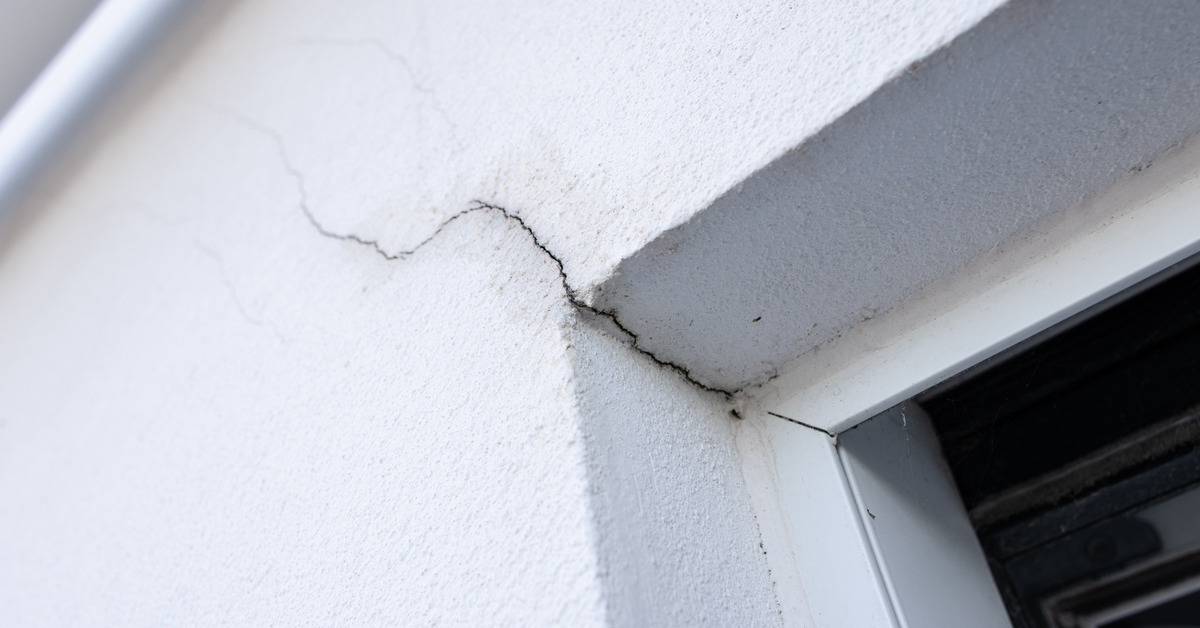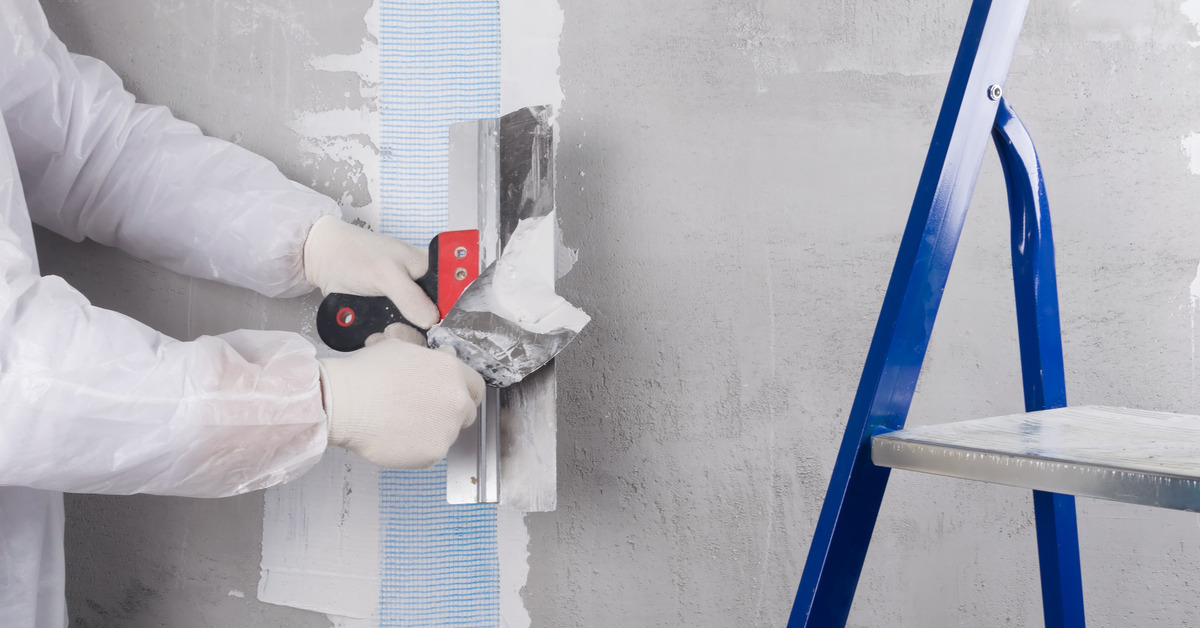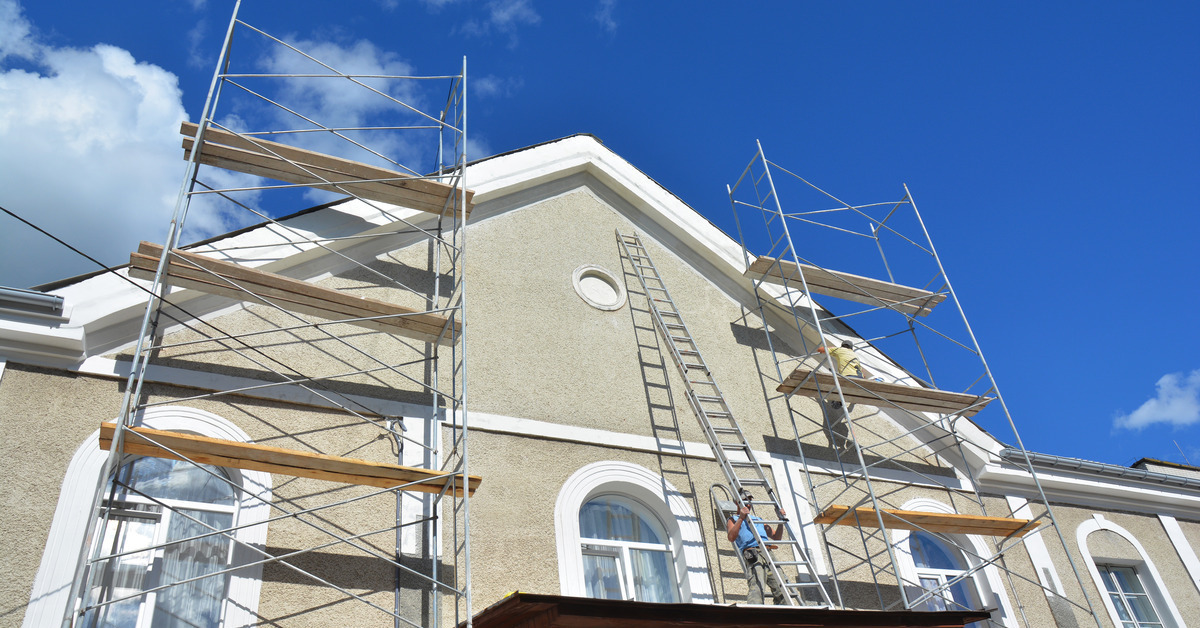Stucco is an incredibly versatile and common material to use for exterior walls, but there are some maintenance considerations to keep in mind for the long term. The material won’t last forever; hairline cracks may turn into larger breaks if they’re ignored for too long. In a worst-case scenario like this, the building’s structural integrity is at risk.
Putting off necessary repairs or regular maintenance causes a snowball effect, where simple problems cascade into more complex, more expensive issues. Be aware of how to properly repair cracks in exterior stucco to guarantee that the building’s walls will last for years to come. Taking the necessary measures now can prevent costly repairs later.

Common Causes of Stucco Damage
There isn’t a singular cause why stucco cracks. In fact, there are several different reasons behind this structural impairment.
If you see a crack forming, try to determine exactly why the crack emerged in the first place. Knowing the initial reason can help you fix it and prevent future damage later. Below are a few reasons why stucco cracks form:
The House Is Settling
Houses naturally settle after construction due to the soil’s composition and weather conditions. Although settling is common, it can create fractures in interior and exterior walls. If this is the case, technicians can quickly repair the imperfection to prevent further damage.
The Stucco Is Poorly Mixed
Stucco is a mixture of both sand and cement, and a typical ratio needs to include three-quarters sand and one-quarter cement. That ratio can be different depending on the specific use of the stucco. Nonetheless, a low-quality stucco mixture or incorrect application of a certain mixture can result in weakened stucco that’s easily susceptible to damage. It’s valuable to know the requirements of each project before selecting the stucco product, and then meticulously measure the mixture.
The Stucco Suffered Weather Damage
Extreme heat, high winds, and moisture buildup can all negatively affect stucco. In the case of a hairline fracture forming on the face of an exterior wall, water or other moisture becomes trapped in the fissure. If the water freezes, it can expand, cause further damage to the wall, and increase the size of the hole. The larger imperfection will allow more water to enter and potentially freeze.
There can also be indirect damage to stucco walls. High winds can throw objects into your stucco walls, causing minimal or severe structural damage.
Steps To Repair Fractured Stucco Walls
Every additional crack in a stucco wall presents a unique problem, but there is a general procedure to follow when you encounter a cracked stucco surface. Learn the steps for repairing cracked stucco walls as well as become aware of what each specific situation calls for.
Remove Excess Debris
The particles inside a cracked wall can prevent you from fully repairing the material. Most of the time, you’ll need to clean out cracked stucco prior to filling because there is dirt or residue within. Use compressed air to fully expel any debris that’s left in the cracked area, so you eliminate additional problems in the future.
Letting the debris settle into the cracks might create pockets inside the repaired wall, where the issues will persist and require further maintenance. Ensure the surface is clean, remove the debris, and do your best to fill in any pockets the first time around.
Fill In the Crack for Greater Stability
Some cracks are so small that they only require a little caulk to completely fill in the hole. In the case of more substantial fractures, you’ll need to mix more stucco and fill in the cracks. Clear out any debris and select the correct stucco mixture. Then, you can apply the new stucco to the fractured area.
During this process, make sure you fully press the new material into the hole for maximum coverage. Use a rubber float to pack in the new stucco securely. A tighter fit will ensure a stronger wall in the long term.
Enlarge the Crack if Necessary
Depending on the size and shape of the wall’s crack, enlarging the fracture is potentially unnecessary. Nonetheless, it’s a step to consider.
If you find that the fissure is oddly shaped and won’t mesh with the new stucco, consider using a hammer and chisel to slightly chip away at the area. You can create an ideal shape that will stimulate the new stucco to adhere to the wall.
Again, the necessity of this step depends on the crack itself. Examine the fracture first before chiseling; don’t assume that it will need reworking from the start. If you have a wall fracture that doesn’t need reshaping, then chiseling could cause more damage.
Apply Adequate Mesh to the Damaged Area
If you want to add an extra layer of support to your newly repaired stucco wall, utilize mesh while packing in the new material. Mesh can enhance the wall’s strength, prevent future cracking, and increase the wall’s durability for a longer life span.
This step can potentially delay future maintenance by reinforcing the stucco from the beginning.

Apply a Coating Finish
After cleaning, packing, and strengthening the stucco wall, you’ll want to add a layer of finish to protect the material from the elements. Finishes serve as a shield for stucco to increase its longevity, reduce the risk of damage, and protect it from nature.
An acrylic stucco finish provides the durability wall needs. It’s a preemptive measure to ensure that no additional impairments affect stucco walls or affect the structural integrity of the building. You may need to smooth out the surface after application, as well as paint the area to match the rest of the home.
Ensure Long-Lasting Protection for Stucco Walls
When it comes to repairing stucco walls, it’s critical to meticulously follow these steps to guarantee that the walls stand strong for many years. Conducting an inadequate repair job can cause bigger issues that provide inhabitants with a false sense of security due to persistent construction issues.
Understanding the underlying causes of stucco wall cracks, determining the best course of action, and carefully repairing the fractures will prevent further damage.
Construction technicians can’t always prevent damage to structures. However, they can provide routine, high-quality maintenance to counteract any developing problems with the structure’s stucco walls.


Leave a Reply